Featured Instructional Design Project
"Cleaning and Sanitation for human food production"
A Research-Validated E-Learning Solution for Critical Safety and Compliance
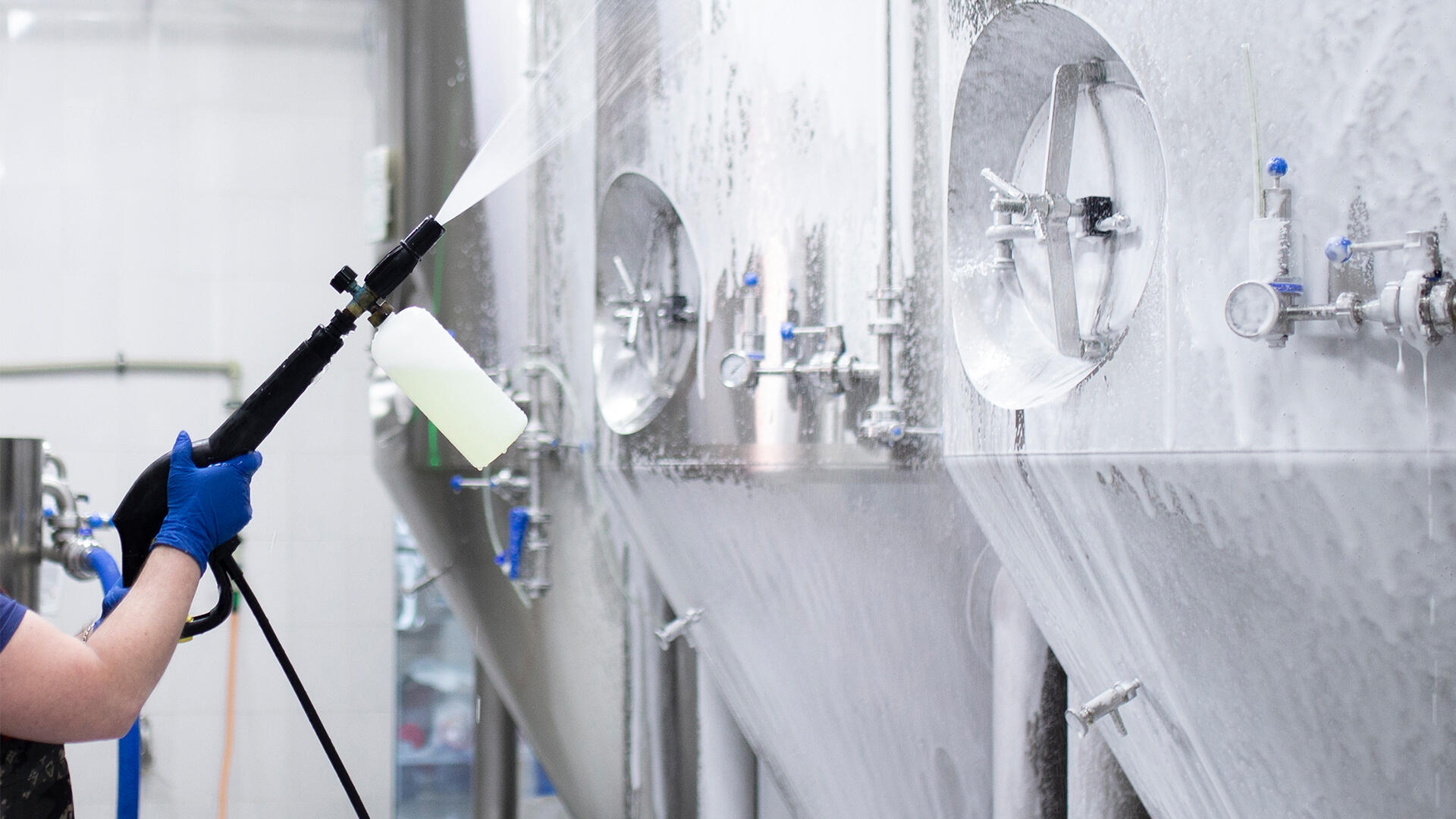
MY ROLELead Instructional Designer, Senior Art Director and Researcher
PROJECT MISSIONTo design and validate a scalable e-learning solution that closes a critical skills gap in a high-compliance manufacturing environment, ensuring both safety and operational excellence.
TOOLS USEDArticulate Storyline, Adobe Creative Suite, Google Forms, AI Video Avatars, Client Proprietary Course Builder and LMS

THE OPPORTUNITYExperienced, mid-level employees in food manufacturing possess strong operational skills but often lack the advanced, strategic expertise required to lead modern sanitation programs. The primary business challenge was to bridge this critical skills gap for a large workforce where traditional, hands-on training is often impractical and cost-prohibitive to scale.
THE GOALThe goal was to design a scalable e-learning solution that elevates employees from proficiently performing tasks to proactively managing a comprehensive sanitation program based on contemporary food safety science.
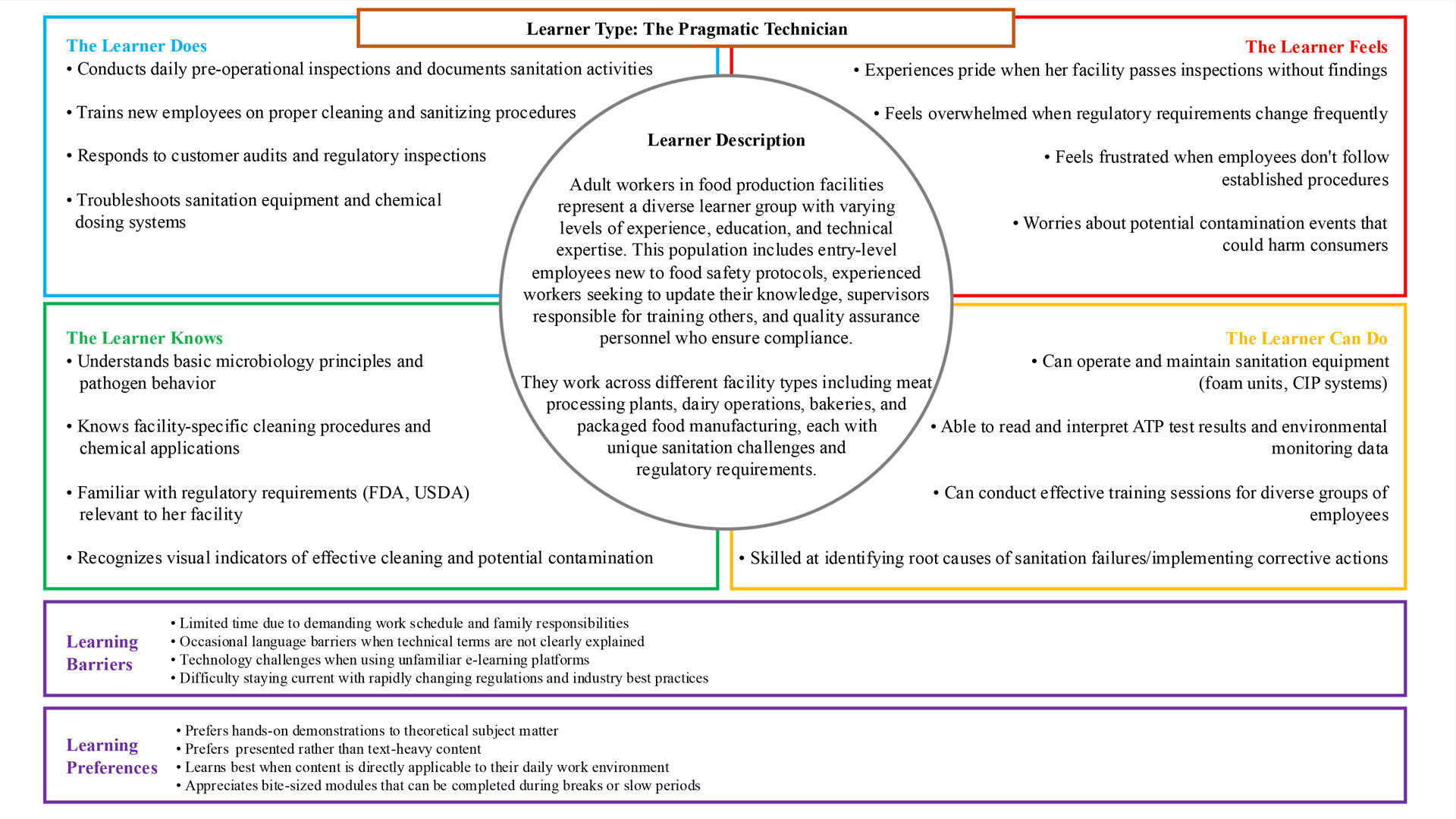
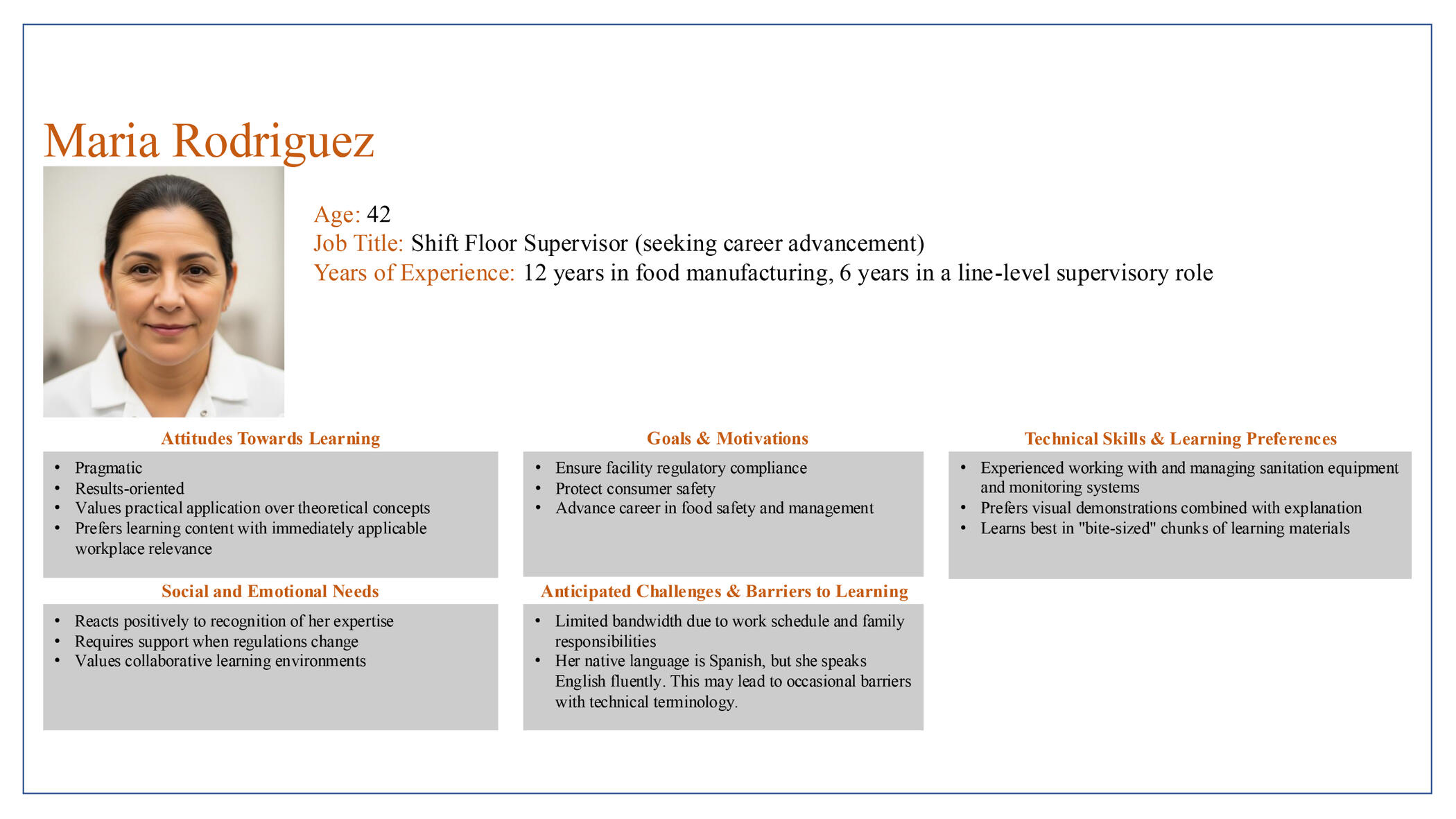
A LEARNER-CENTERED APPROACHThe entire project was grounded in a deep, empathetic understanding of the end-user, developed from over 14 years of direct industry analysis and client interviews. This research was synthesized into our core persona:Maria Rodriguez, the "Pragmatic Technician"Maria represents the skilled, hands-on professional common in high-compliance fields—from food safety to aerospace. Designing for her meant focusing on these core attributes:Immediate Applicability: She values practical, task-oriented training that is directly relevant to her daily work environment.Visual Demonstration: She prefers hands-on and presented content over dense, text-heavy materials.Efficiency: With a demanding work schedule, she needs flexible, "bite-sized" training modules that respect her limited time.
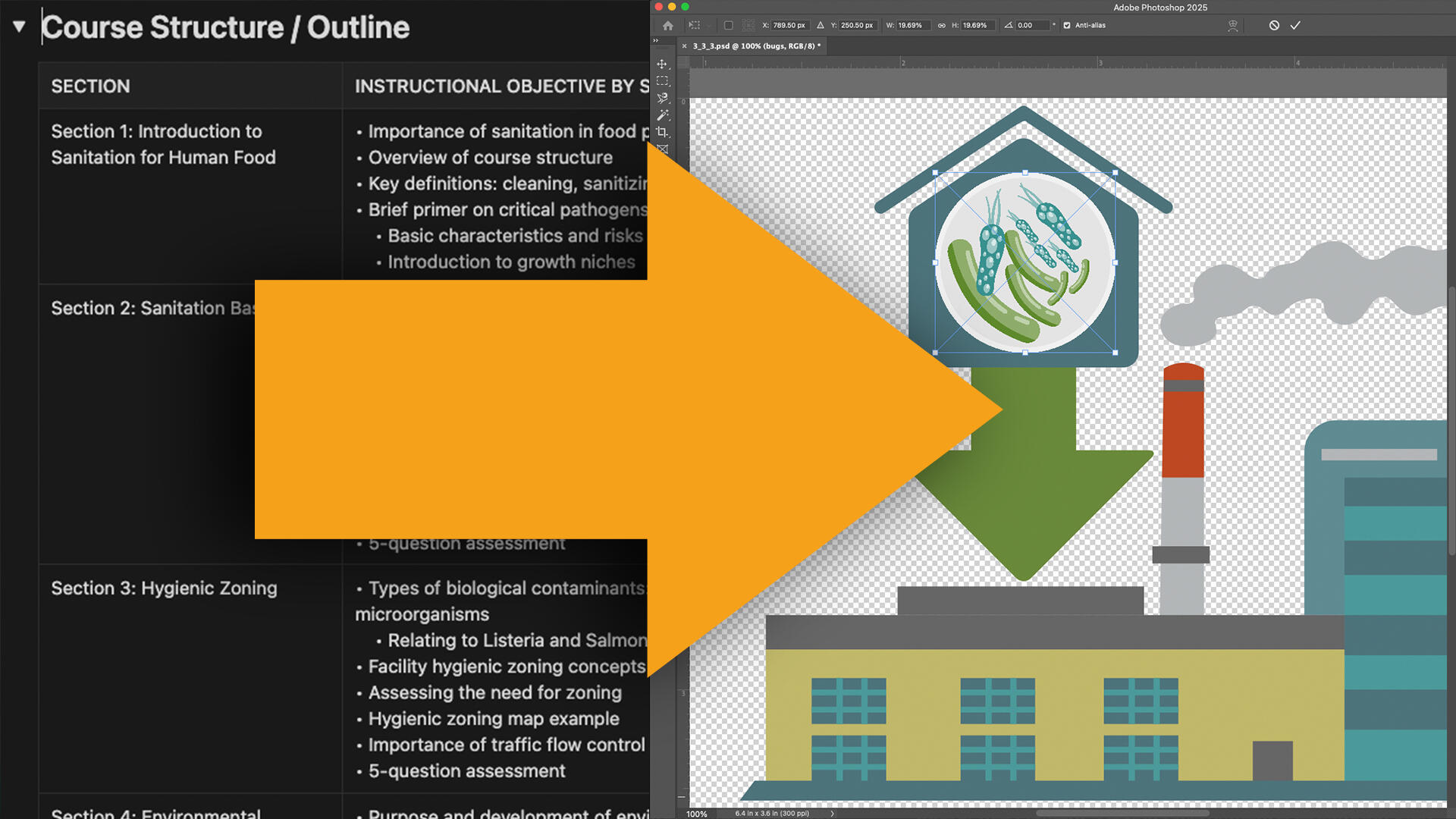
MY PROCESS: FROM STRATEGY TO SOLUTIONThe project followed a structured, multi-phase approach to ensure the final product was aligned with both learner needs and business goals.Phase 1: Defining the Goal
The process began by establishing a single, overarching learning goal: to advance the learner’s capabilities from operational execution to strategic leadership in sanitation. This provided a clear north star for the entire project.Phase 2: Scaffolding the Learning
To create a clear learning path, specific and measurable learning objectives were developed for each of the five course sections . This ensured that each piece of content served a distinct purpose in building toward the final goal.Phase 3: Designing the Experience
The final solution, a video-based direct instruction with interactive elements, was chosen after evaluating three potential options. This approach was selected because it directly addressed the persona’s preference for visual content while remaining within the practical constraints of budget, timeline, and technology risks associated with more complex simulations . Interactive elements were then designed in Articulate Storyline to reinforce key concepts and provide hands-on practice.
THE E-LEARNING SOLUTIONThe final product is a comprehensive e-learning course, Cleaning and Sanitation for Human Food Production, designed to be engaging, accessible and immediately applicable for the target audience. The course systematically builds strategic knowledge over five distinct sections.KEY FEATURESExpert-Led Video Instruction: The core content is delivered by a presenter in a series of short video segments to align with the persona's preference for presented, visual content over text-heavy materials.Interactive Reinforcement: Throughout the course, custom interactive elements built in Articulate Storyline, such as drag-and-drop activities and informational hotspots, appear to reinforce key concepts and assess learning in real-time.Structured Learning Path: The course is organized into five sections with clear, measurable learning objectives for each, guiding the learner from foundational knowledge to advanced topics like Hygienic Zoning and Environmental Monitoring .Aligned Assessment Strategy: The learning is supported by formative quizzes at the end of key sections and a final summative assessment to measure mastery of the overarching learning goal.
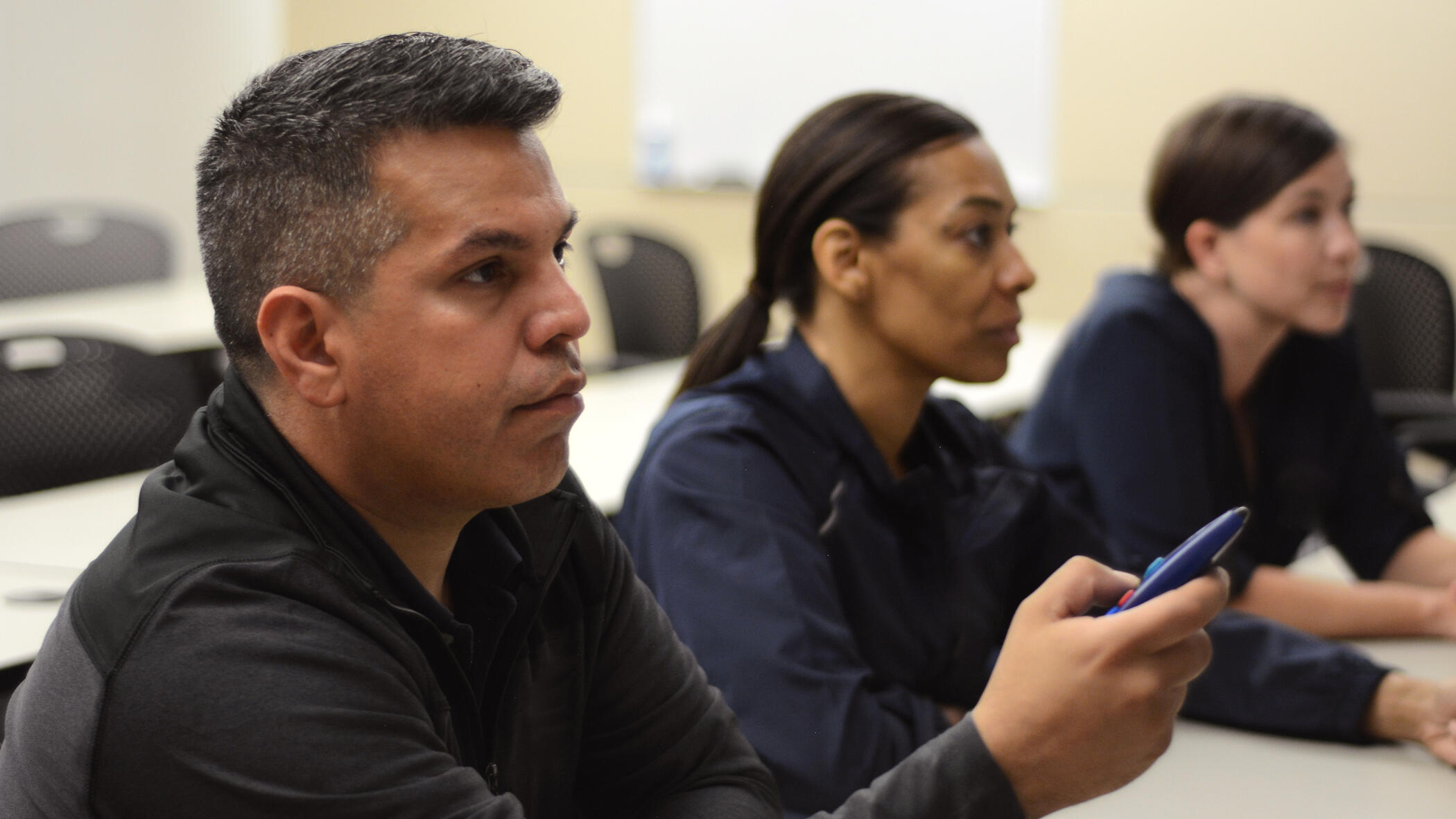
MEASURING IMPACT: A MIXED-METHODS STUDYTo validate the effectiveness of the course, a mixed-methods research study was designed and implemented. This approach was chosen to capture both objective knowledge gain and subjective learner perceptions.METHODOLOGY HIGHLIGHTS:Quantitative Analysis: A 12-question pre-test and a parallel 12-question post-test were used to measure the change in knowledge. The primary quantitative indicator of effectiveness was the descriptive "growth score" derived from the comparison of mean scores.Qualitative Analysis: A post-course questionnaire with Likert scale questions and open-ended freeform questions was used to gather detailed feedback on learner perceptions of usability and effectiveness.Data-Driven Iteration: The findings from this study are designed to provide a foundational understanding of the course's effectiveness and to inform the design of future iterations and training solutions.STUDY DOWNLOAD
"The universe is full of magical things patiently waiting for our wits to grow sharper." - Eden Phillpotts
© 2025 Steve Richey. All Rights Reserved.